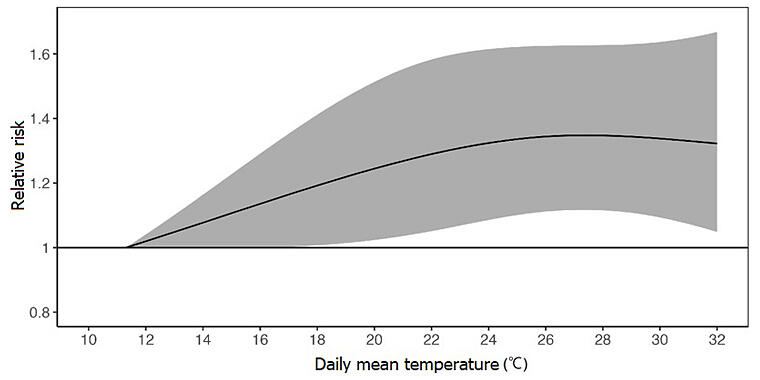A research team led by Associate Professor Nobutoshi Nawa and Professor Takeo Fujiwara of the Department of Public Health and Professor Kiyohide Fushimi of the Department of Health Policy and Informatics, Graduate School of Medical and Dental Sciences at Institute of Science Tokyo, analyzed nationwide hospitalization data from 2011 to 2022 and found an association between heat exposure and an increased risk for Kawasaki disease in children. The study was published in Environmental Research.

Provided by Science Tokyo
Kawasaki disease, first reported by Dr. Tomisaku Kawasaki in 1967, is the most common acquired heart disease in children in developed countries, with the incidence in Japan being reportedly the highest in the world. However, despite nearly 50 years of research since then, its cause has not yet been fully elucidated.
The research team used data from a nationwide hospitalization database and weather data from the Japan Meteorological Agency to determine the impact of exposure to high temperatures on the risk of Kawasaki disease. The association between exposure to high temperatures and Kawasaki disease was examined in the data on patients hospitalized for the disease during the 5-month period from May to September, the hottest months of the year, over 12 years in Japan.
The hospitalization data were extracted from the DPC, a large database of hospitalized patients collected from eligible hospitals nationwide, and temperature data were obtained from the Japan Meteorological Agency. A time lag (lag effect) between exposure to the temperature and the occurrence of its effect was also considered.
The analysis revealed that heat exposure was associated with an increased risk for Kawasaki disease in children. In particular, exposure to extreme heat (daily mean temperature of 30.7℃, which corresponds to the top 1%) was found to increase the risk for hospitalization by 33% (95% confidence interval: 8%-65%). The baseline temperature was 11.3℃, at which the risk was lowest.
Avoiding hot environments based on heat stroke alerts may reduce the risk of developing Kawasaki disease in children. Future studies should evaluate the release of inflammatory mediators from airway epithelial cells and other mechanistic factors that can explain the relationship between temperature and Kawasaki disease.
Journal Information
Publication: Environmental Research
Title: Association between heat exposure and Kawasaki disease: A time-stratified case-crossover study
DOI: 10.1016/j.envres.2024.120231
This article has been translated by JST with permission from The Science News Ltd. (https://sci-news.co.jp/). Unauthorized reproduction of the article and photographs is prohibited.




